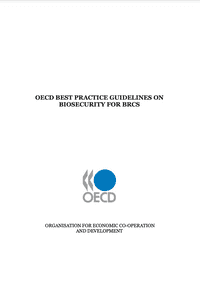
Languages: English, Spanish
Best Practice Guidelines on Biosecurity for Biological Resource Centres
[Guidelines on Biosecurity for BRCs]
Biological Resource Centres (BRCs) were established in 2001 to be a repository of high quality biological materials and information. Due to the fact that BRCs allow the quick exchange of materials, they need a robust set of protocols for ensuring biosecurity. This best practices guidance lead BRCs through the process of establishing biosecurity protocols for each center.
SUMMARY
The Best Practice Guidelines on Biosecurity for Biological Resource Centres (BRCs) set out the protocols for operating BRCs, which are repositories of living cells, components of living cells such as genomes and information about biological materials and processes stored in databases. BRCs range in size and capabilities, but they share a need to keep their materials and data secure against loss or theft. The guidelines outline a risk assessment approach for the wide variety of materials and data that might be stored in a BRC; the first step of the assessment is to assign each material one of four biosecurity risk levels, and the second steps walks users through what measures need to be taken based on the risk level of the material. The goal of the guidelines is to establish biosecurity without being overbearing.
The guidelines were published by the Organisation for Economic Co-operation and Development (OECD) in 2007. The OECD is an intergovernmental organization founded in 1961 that has 38 member countries that work together to stimulate economic progress. The OECD began advocating for the development of BRCs in 2001 in order to meet the growing demand for biotechnology resources and help spur further biotechnology development. In addition to the biosecurity guidelines, the OECD also released quality guidelines in 2007 to make sure the materials in BRCs were safe and effective. The biosecurity guidelines are available in English and Spanish.

..png)
